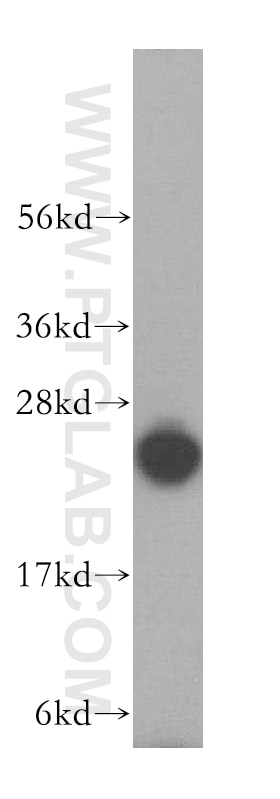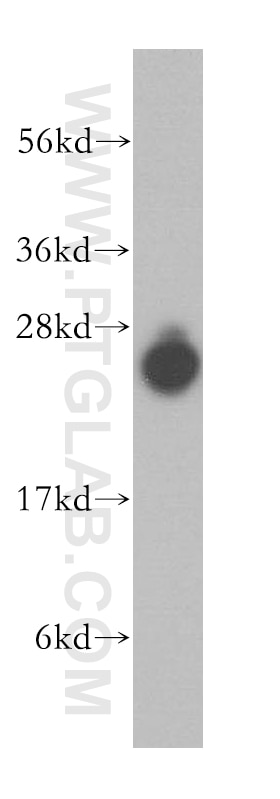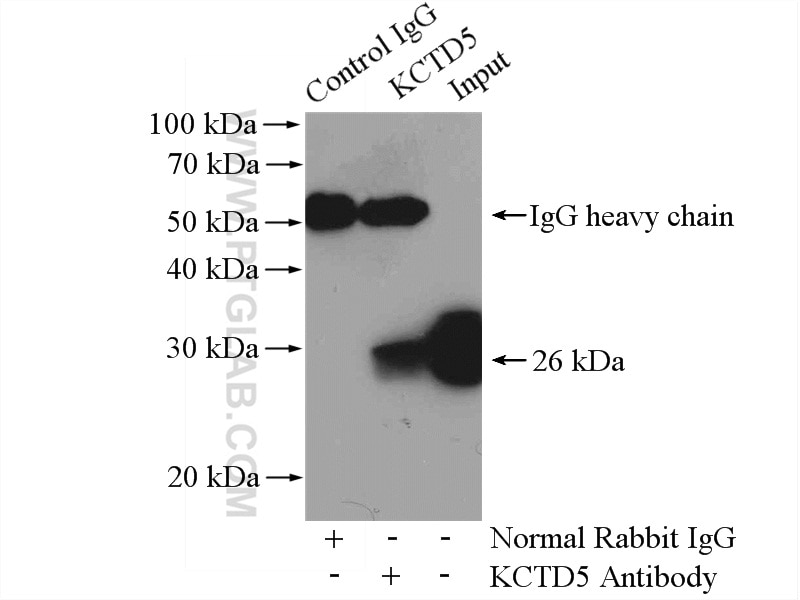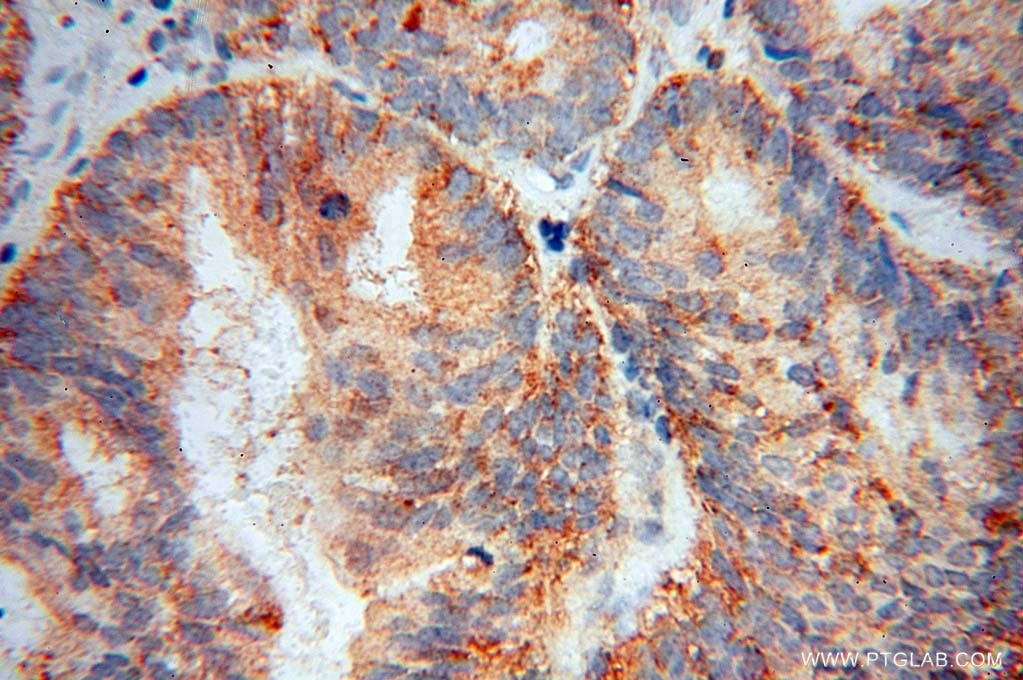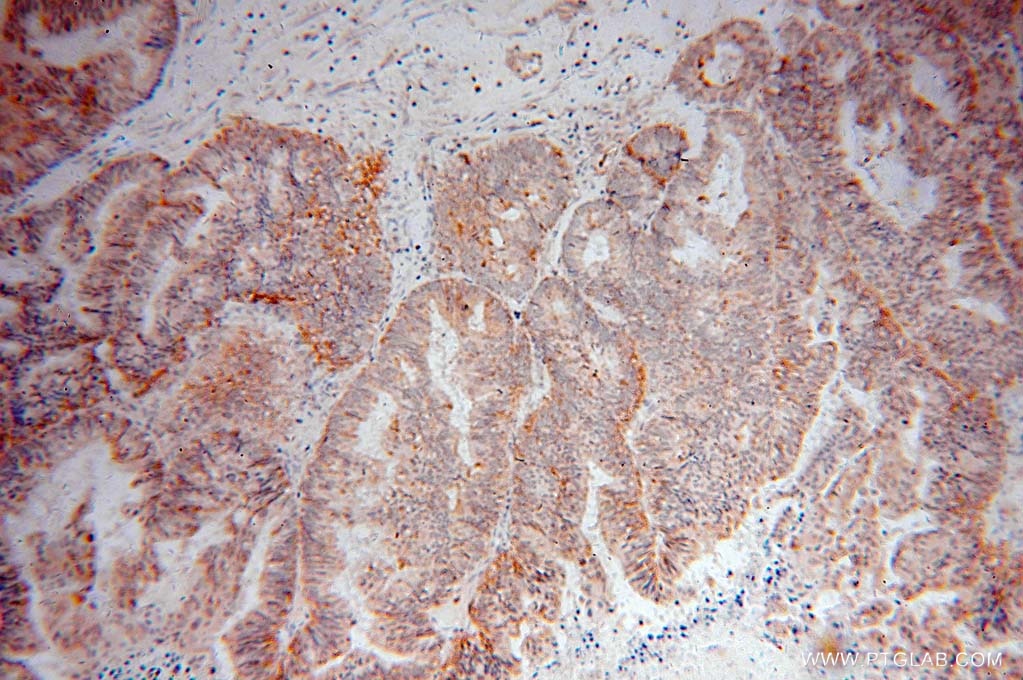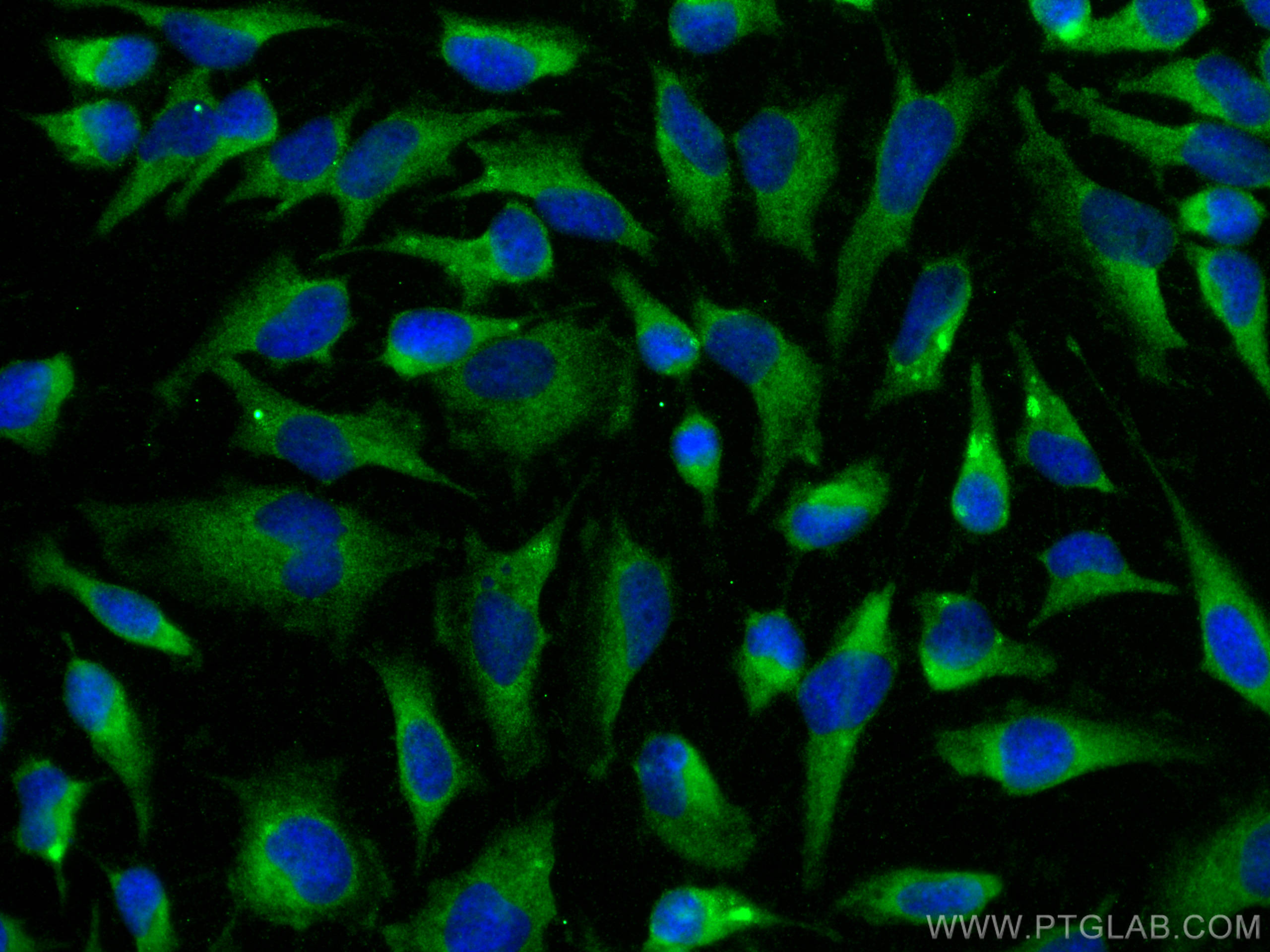- Featured Product
- KD/KO Validated
KCTD2/5/17 Polyklonaler Antikörper
KCTD2/5/17 Polyklonal Antikörper für WB, IHC, IF/ICC, IP, ELISA
Wirt / Isotyp
Kaninchen / IgG
Getestete Reaktivität
human, Maus, Ratte
Anwendung
WB, IHC, IF/ICC, IP, ELISA
Konjugation
Unkonjugiert
Kat-Nr. : 15553-1-AP
Synonyme
Geprüfte Anwendungen
| Erfolgreiche Detektion in WB | HeLa-Zellen, humanes Hirngewebe |
| Erfolgreiche IP | HeLa-Zellen |
| Erfolgreiche Detektion in IHC | humanes Ovarialkarzinomgewebe Hinweis: Antigendemaskierung mit TE-Puffer pH 9,0 empfohlen. (*) Wahlweise kann die Antigendemaskierung auch mit Citratpuffer pH 6,0 erfolgen. |
| Erfolgreiche Detektion in IF/ICC | HeLa-Zellen |
Empfohlene Verdünnung
| Anwendung | Verdünnung |
|---|---|
| Western Blot (WB) | WB : 1:500-1:2000 |
| Immunpräzipitation (IP) | IP : 0.5-4.0 ug for 1.0-3.0 mg of total protein lysate |
| Immunhistochemie (IHC) | IHC : 1:20-1:200 |
| Immunfluoreszenz (IF)/ICC | IF/ICC : 1:200-1:800 |
| It is recommended that this reagent should be titrated in each testing system to obtain optimal results. | |
| Sample-dependent, check data in validation data gallery | |
Veröffentlichte Anwendungen
| KD/KO | See 2 publications below |
| WB | See 10 publications below |
| IP | See 1 publications below |
Produktinformation
15553-1-AP bindet in WB, IHC, IF/ICC, IP, ELISA KCTD2/5/17 und zeigt Reaktivität mit human, Maus, Ratten
| Getestete Reaktivität | human, Maus, Ratte |
| In Publikationen genannte Reaktivität | human, Maus, Ratte |
| Wirt / Isotyp | Kaninchen / IgG |
| Klonalität | Polyklonal |
| Typ | Antikörper |
| Immunogen | KCTD2/5/17 fusion protein Ag7915 |
| Vollständiger Name | potassium channel tetramerisation domain containing 5 |
| Berechnetes Molekulargewicht | 26 kDa |
| Beobachtetes Molekulargewicht | 26 kDa |
| GenBank-Zugangsnummer | BC007314 |
| Gene symbol | KCTD5 |
| Gene ID (NCBI) | 54442 |
| Konjugation | Unkonjugiert |
| Form | Liquid |
| Reinigungsmethode | Antigen-Affinitätsreinigung |
| Lagerungspuffer | PBS with 0.02% sodium azide and 50% glycerol |
| Lagerungsbedingungen | Bei -20°C lagern. Nach dem Versand ein Jahr lang stabil Aliquotieren ist bei -20oC Lagerung nicht notwendig. 20ul Größen enthalten 0,1% BSA. |
Hintergrundinformationen
KCTD5 belongs to the human potassium (K+) channel tetramerization domain (KCTD) family of proteins which share sequence similarity with the cytoplasmic domain of voltage-gated K+ channels (Kv channels). The KCTD proteins have relatively conserved N-terminal domains and variable C-termini (PMID: 24268103). KCTD5 interacts with cullin3 and has been proposed to function as substrate adapter for cullin3 based ubiquitin E3 ligases (PMID: 26188516). This polyclonal antibody raised against full-length recombinant protein of human KCTD5 (26 kDa) can cross-react with other KCTD proteins, including KCTD2 (29 kDa), KCTD17 (33-36 kDa).
Protokolle
| PRODUKTSPEZIFISCHE PROTOKOLLE | |
|---|---|
| WB protocol for KCTD2/5/17 antibody 15553-1-AP | Protokoll herunterladen |
| IHC protocol for KCTD2/5/17 antibody 15553-1-AP | Protokoll herunterladenl |
| IF protocol for KCTD2/5/17 antibody 15553-1-AP | Protokoll herunterladen |
| IP protocol for KCTD2/5/17 antibody 15553-1-AP | Protokoll herunterladen |
| FC protocol for KCTD2/5/17 antibody 15553-1-AP | Download protocol |
| STANDARD-PROTOKOLLE | |
|---|---|
| Klicken Sie hier, um unsere Standardprotokolle anzuzeigen |
Publikationen
| Species | Application | Title |
|---|---|---|
Sci Adv Structural basis for the ubiquitination of G protein βγ subunits by KCTD5/Cullin3 E3 ligase | ||
Nat Commun Knowledge graph-based recommendation framework identifies drivers of resistance in EGFR mutant non-small cell lung cancer.
| ||
Elife Genome-wide CRISPR screening reveals genetic modifiers of mutant EGFR dependence in human NSCLC. | ||
PLoS Genet Conserved properties of Drosophila Insomniac link sleep regulation and synaptic function. | ||
Commun Biol Genome-wide CRISPR screens identify the YAP/TEAD axis as a driver of persister cells in EGFR mutant lung cancer |
